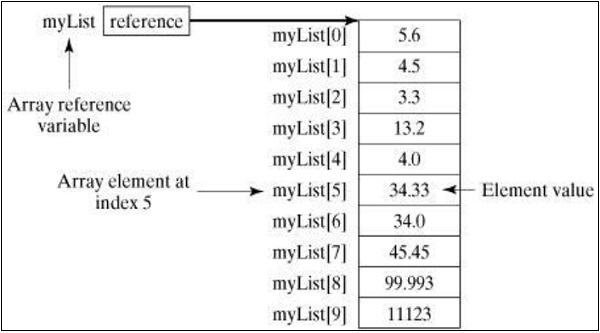
- Scala Collections Tutorial
- Scala Collections - Home
- Scala Collections - Overview
- Scala Collections - Environment Setup
- Scala Collections - Arrays
- Scala Collections - Array
- Scala Collections - Multi-Dimensional Array
- Scala Collections - Array using Range
- Scala Collections - ArrayBuffer
- Scala Collections - Lists
- Scala Collections - List
- Scala Collections - ListBuffer
- Scala Collections - ListSet
- Scala Collections - Vector
- Scala Collections - Sets
- Scala Collections - Set
- Scala Collections - BitSet
- Scala Collections - HashSet
- Scala Collections - TreeSet
- Scala Collections - Maps
- Scala Collections - Map
- Scala Collections - HashMap
- Scala Collections - ListMap
- Scala Collections - Miscellaneous
- Scala Collections - Iterator
- Scala Collections - Option
- Scala Collections - Queue
- Scala Collections - Tuple
- Scala Collections - Seq
- Scala Collections - Stack
- Scala Collections - Stream
- Scala Collections Combinator methods
- Scala Collections - drop
- Scala Collections - dropWhile
- Scala Collections - filter
- Scala Collections - find
- Scala Collections - flatMap
- Scala Collections - flatten
- Scala Collections - fold
- Scala Collections - foldLeft
- Scala Collections - foldRight
- Scala Collections - map
- Scala Collections - partition
- Scala Collections - reduce
- Scala Collections - scan
- Scala Collections - zip
- Scala Collections Useful Resources
- Scala Collections - Quick Guide
- Scala Collections - Useful Resources
- Scala Collections - Discussion
Scala Collections - Array
Scala provides a data structure, the array, which stores a fixed-size sequential collection of elements of the same type. An array is used to store a collection of data, but it is often more useful to think of an array as a collection of variables of the same type.
Instead of declaring individual variables, such as number0, number1, ..., and number99, you declare one array variable such as numbers and use numbers[0], numbers[1], and ..., numbers[99] to represent individual variables. This tutorial introduces how to declare array variables, create arrays, and process arrays using indexed variables. The index of the first element of an array is the number zero and the index of the last element is the total number of elements minus one.
Declaring Array Variables
To use an array in a program, you must declare a variable to reference the array and you must specify the type of array the variable can reference.
The following is the syntax for declaring an array variable.
Syntax
var z:Array[String] = new Array[String](3) or var z = new Array[String](3)
Here, z is declared as an array of Strings that may hold up to three elements. Values can be assigned to individual elements or get access to individual elements, it can be done by using commands like the following −
Command
z(0) = "Zara"; z(1) = "Nuha"; z(4/2) = "Ayan"
Here, the last example shows that in general the index can be any expression that yields a whole number. There is one more way of defining an array −
var z = Array("Zara", "Nuha", "Ayan")
Following picture represents an array myList. Here, myList holds ten double values and the indices are from 0 to 9.

Processing Arrays
When processing array elements, we often use loop contol structures because all of the elements in an array are of the same type and the size of the array is known.
Below is an example program of showing how to create, initialize and process arrays −
Example
object Demo {
def main(args: Array[String]) {
var myList = Array(1.9, 2.9, 3.4, 3.5)
// Print all the array elements
for ( x <- myList ) {
println( x )
}
// Summing all elements
var total = 0.0;
for ( i <- 0 to (myList.length - 1)) {
total += myList(i);
}
println("Total is " + total);
// Finding the largest element
var max = myList(0);
for ( i <- 1 to (myList.length - 1) ) {
if (myList(i) > max) max = myList(i);
}
println("Max is " + max);
}
}
Save the above program in Demo.scala. The following commands are used to compile and execute this program.
Command
\>scalac Demo.scala \>scala Demo
Output
1.9 2.9 3.4 3.5 Total is 11.7 Max is 3.5
Scala does not directly support various array operations and provides various methods to process arrays in any dimension. If you want to use the different methods then it is required to import Array._ package.